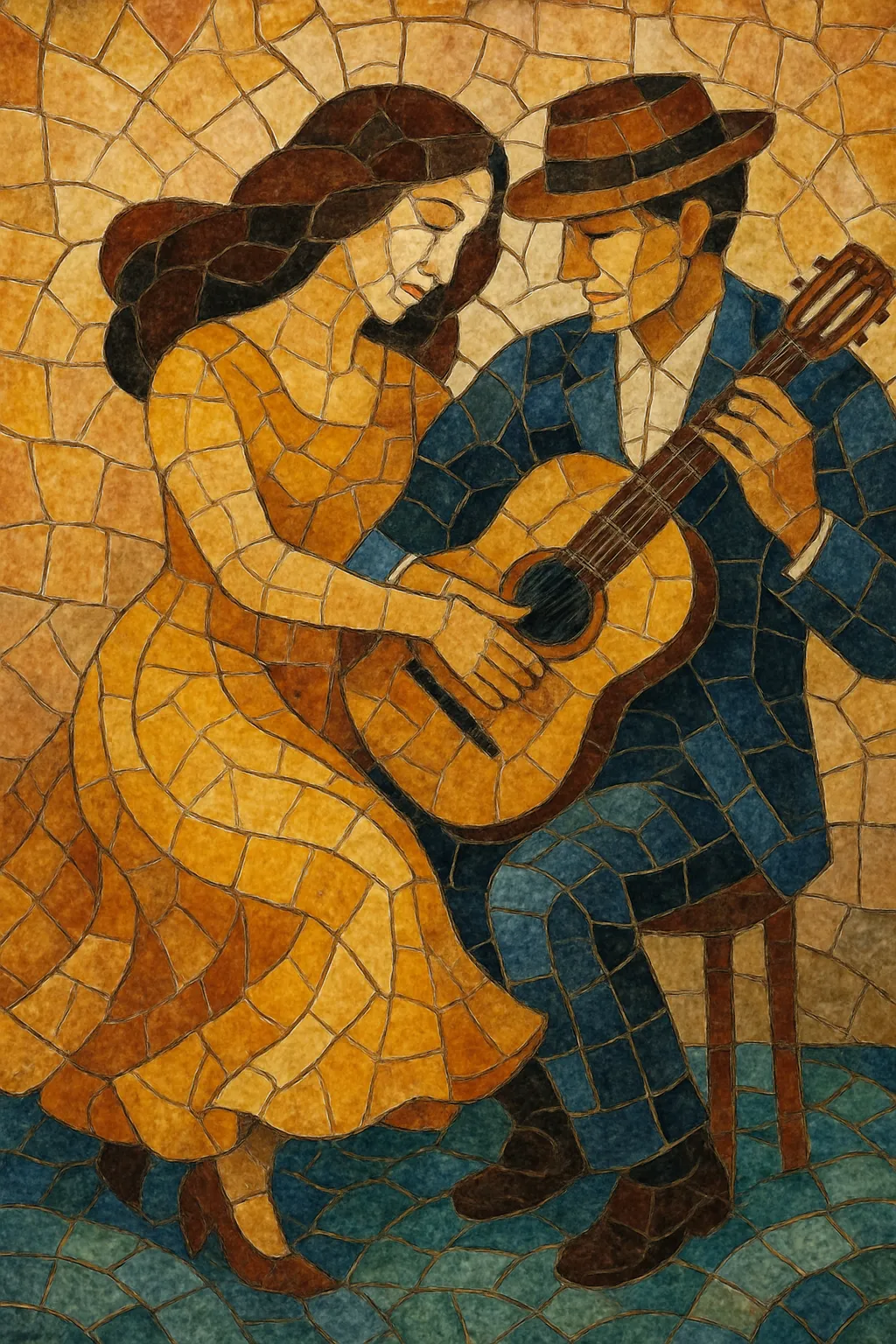Valsa brasileira is the Brazilian take on the European waltz, rendered in 3/4 time but phrased with the lyricism, rubato, and subtle swing of Brazilian popular music. It flourished first as salon and seresta (serenade) music and soon became a core form in the choro repertoire.
Compared with the Viennese tradition, Brazilian waltzes favor singing melodic lines, chromatic inner motion, and bass “baixaria” counter-lines on 7‑string guitar. Forms often mirror choro structures (e.g., ABACA or AABBACCA), and harmonies draw from Romantic classical language—secondary dominants, diminished passing chords, modal mixture, and smooth modulations—while keeping a warm, intimate, and nostalgic character.
European waltzes entered Brazilian social and salon life in the 19th century and quickly intertwined with local traditions like modinha and seresta. By the 1880s–1890s, composers such as Chiquinha Gonzaga and Ernesto Nazareth were writing distinctive valsas that balanced European dance forms with Brazilian melodic grace and rhythmic nuance.
As choro crystallized in Rio de Janeiro, the valsa became one of its staple forms alongside polcas and choros-proper. The ensemble practice—flute/clarinet, cavaquinho, 6‑ and 7‑string guitars, bandolim—adapted the waltz into “valsa-choro,” retaining 3/4 meter but enriching it with contrapuntal bass lines (baixarias), ornamental melodies, and flexible phrasing. Figures like Pixinguinha, Jacob do Bandolim, and Dilermando Reis expanded the repertoire and performance practice in recordings and radio.
The genre’s melodic and harmonic language influenced and was reflected by Brazilian classical composers. Francisco Mignone’s celebrated Valsas de Esquina and Heitor Villa-Lobos’s piano valsas (e.g., “Valsa da Dor”) brought the idiom into the concert hall, translating seresta atmosphere and choro inflections into art-music forms. Radamés Gnattali and others continued to blur lines between popular and classical domains.
Today, valsa brasileira remains part of the choro circuit, guitar repertoire, and MPB songbook. Its emotive, nostalgic tone and refined harmony continue to inspire arrangers, instrumentalists, and singer-songwriters, ensuring the form’s ongoing life in recordings, rodas de choro, and conservatory programs.


